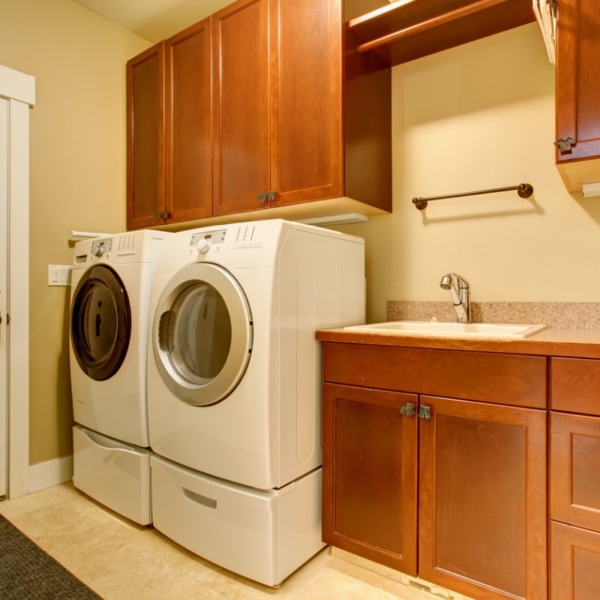Now, I believe everyone who told me about all the aches and pains that come with aging. As someone who suffers from chronic pain, I’m used to managing it on a regular basis. But now, it’s most definitely an everyday thing. Here’s how to make gardening easier as you age or your health changes.

When I saw that Perla Sofía Curbelo-Santiago of Agrochic was putting out a book, I instantly knew I would love it as I’ve always admired how she weaves Puerto Rican and American gardening culture together.
Her book ¡Verdura! – Living a Garden Life: 30 Projects to Nurture Your Passion for Plants and Find Your Bliss reminds me very much of my first book, Garden Made. When I was writing Garden Made, I wanted to make sure that the projects were uncomplicated and seasonal so that everyone could get some garden therapy year-round.
The projects in Perla’s books are also very accessible, and I know that Perla frames her gardening work for all kinds of gardeners to enjoy. The projects are great opportunities for those who struggle to keep up with the garden to stay involved.
I highly suggest you check out the book to see all of the projects. Today, I wanted to feature one of my favourite aspects of the book, which is how you can make gardening easier for yourself as you age or find yourself limited due to health reasons.
Perla is an inspiring person, who always finds a way to make things work. She’s terrified of heights and married to a pilot after all! So read on for both of our tips for making gardening work, no matter your abilities.
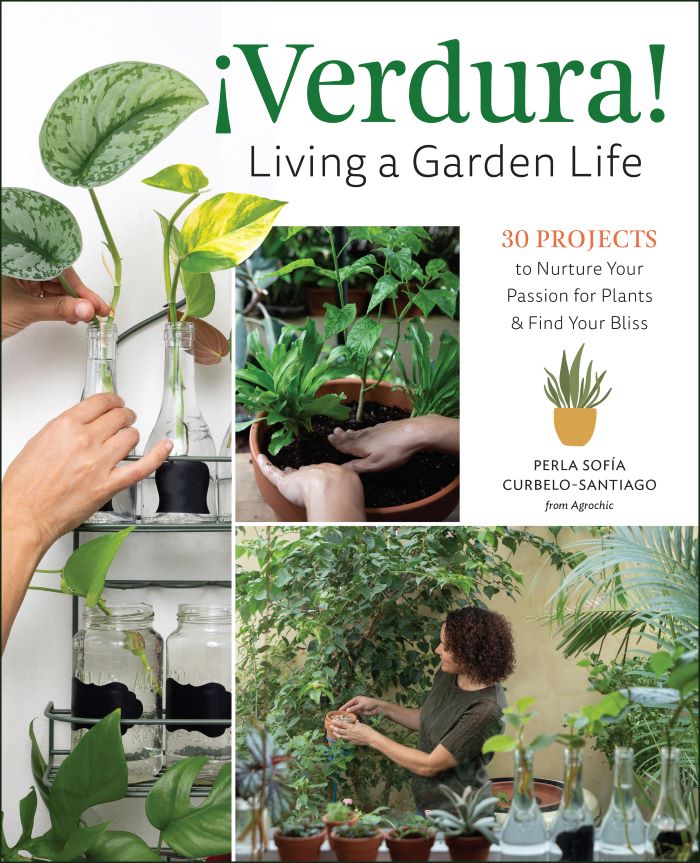
Quotes reprinted with permission from ¡Verdura! – Living a Garden Life: 30 Projects to Nurture Your Passion for Plants and Find Your Bliss by Perla Sofía Curbelo-Santiago © 2024. Published by Cool Springs Press.
My Changing Garden
I didn’t grow up as a gardener. It wasn’t until I became severely disable overnight that I turned to gardening as a form of therapy. It started so small, with just five minutes a week, which turned into five a minutes a day, then ten minutes, and so on.
It took years, and it wasn’t something that just happened overnight. But since I didn’t come from a gardening background, the first garden I created was incredibly accessible and designed with my disability in mind.
As I have evolved my gardening style over the years, I have prioritized a regenerative garden model. This is a garden that is mostly self-reliant, meaning I have very little maintenance to do, which is great for my body.
I recently moved into a new home and am starting from scratch. It’s a big project, as the yard has been neglected for quite some time. The big difference this time around is that I’m aging and facing my disability.
Changing your garden is a constant thing, as it should adjust based on where you live, what you like to grow, how you enjoy your garden, and your own capabilities.
“As we grow older or health circumstances push us to adjust our daily routine to be able to continue functioning physically, mentally, and emotionally, there are certain changes that can take us more time to accept. Sometimes, we come quickly to our senses; other times, it takes a minor accident to make us face reality,” says Perla.
How to Make Gardening Easier as You Age
As I mentioned earlier, Perla is also a big proponent of changing things up rather than giving up gardening. “Because I want to keep gardening, I’m happy to make the necessary adjustments to stay on that path instead of throwing in the towel and quitting a hobby that brings me so much joy and well-being,” she says.
“Remember that the more comfortable we are doing what we like, the more time we will spend on it and with greater satisfaction, regardless of what life brings.”
So, if you find yourself needing to change your garden, whether that’s due to age or health, here are some of the top ways you can make things easier for yourself.

Paths
“Consider leveling and paving the area where you walk daily to get to garden beds, ponds, or rooms around the garden. Reduce the potential to trip or fall on bumps or slippery zones,” says Perla.
In my new house, it came with a raised bed that was backed up against the fence. This meant the only way to access the back was to climb into the raised bed. This won’t do! I’ll have to redesign the garden, starting with removing this raised bed.
If you want an easy and fun weekend project, check out my concrete stepping-stone ideas.

Branch Down
As we age, it can become difficult to maintain taller trees and shrubs. Consider this for future plantings, and consider getting assistance with pruning from a family member or friend or by professional landscapers.
“Reduce the height of trees and shrubs to make them easier to trim or harvest without ladders,” says Perla. “Remove branches or plans that interfere with visibility when passing from one area to another.”
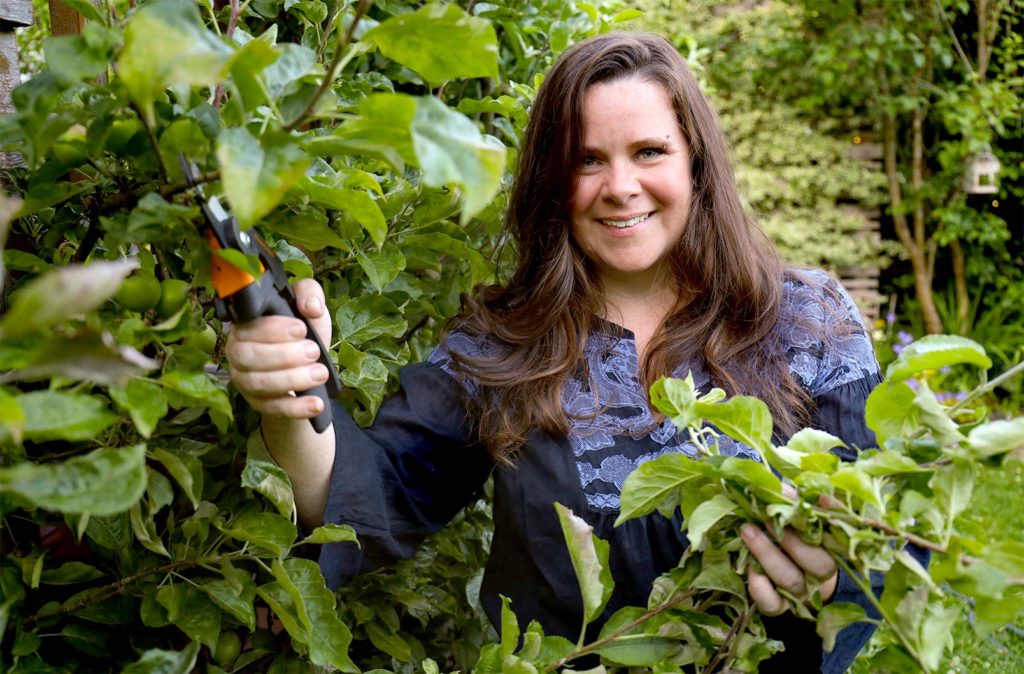
Transportation
Consider where you garden vs where you store your materials and if you could make transportation easier by moving your storage area.
“Use a small wheelbarrow to transport heavy materials, such as bags of soil, potted plants, or things for disposal,” says Perla.
Gardening Tools and Accessories
“Switch to ergonomic and colourful tools as you replace those you already have,” says Perla.
Here are a few ergonomic tools you can try out:
Beyond handheld tools, you can also adjust your watering systems. “Add reels for hose storage and install smart water systems of accessories instead of carrying heavy watering cans around,” suggests Perla.
Comfortable Seating
“Add more seating areas in which to rest and that provide comfortable respite as you go through your garden activities,” says Perla.
In my last garden, I had this hammock chair which was a little sanctuary for Kiddo and I. Even when I was sore or not in the mood to garden, this still allowed me to get outside and enjoy the therapeutic qualities of nature.
Make sure you have at least one comfortable seating area in the shade so you can sit outside at any time of day.
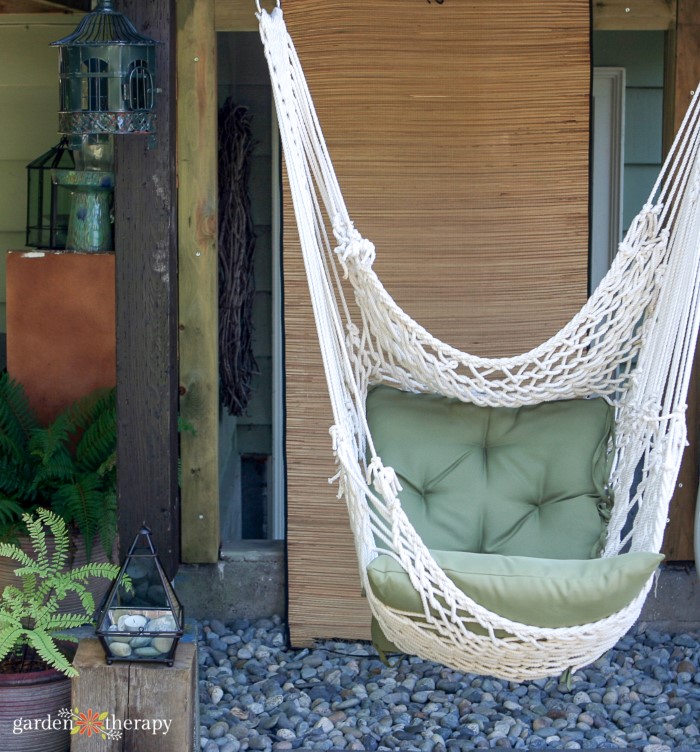
Adjust Your Favourite Gardening Activities
One of my favourite recommendations in Perla’s book is to adjust the tasks that you enjoy most in the garden. Ideally, you shouldn’t have to stop doing what you love most; instead, you should adjust them so they’re still comfortable and manageable.
Start off by listing all the activities you like to do in the garden, then ask yourself:
- When do I enjoy it most?
- What adjustments are required?
- When should I have someone help and delegate this task?
“Changes in our gardening lifestyle don’t need to be drastic, if there is no need,” says Perla, “but we do have to be aware of how decisions made today, regarding the purchase of a tool, the addition of certain plants, or the choosing of hardscapes, will affect our quality of life in a long term.”
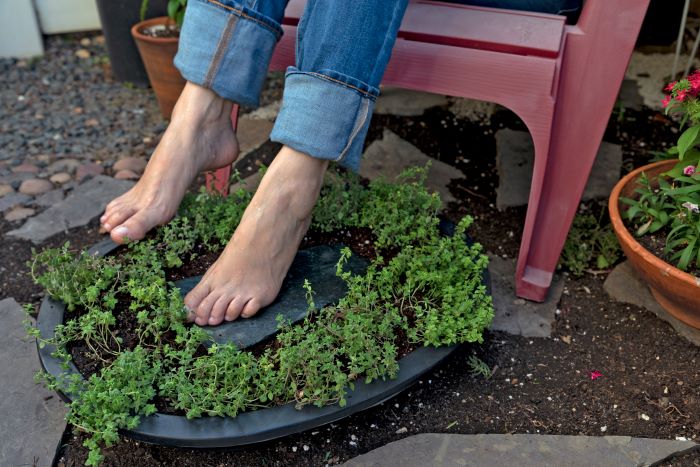
Let me know how you’ve adapted your gardening tasks and activities in the comments below, and maybe you’ll help out a fellow gardener!
Be sure to check out ¡Verdura! for all the projects and Perla’s insights. It’s available in both Spanish and English.


